Udaipur, the romantic city of Rajasthan, is a major tourist attraction. I came here and it was like a love at first sight. Its magnificent palaces, splendid havelis and luxury hotels on the bank of great lakes make it a perfect city to wander. Situated at the bank of Lake Pichola, City Palace is one of these grand palaces and also the most famous one. This palace is an unmatched sample of status,prestige and elegance of the Mewar Dynasty, who ruled over Udaipur. This post will take you in the corridors, rooms, vents and courtyards of this palace.
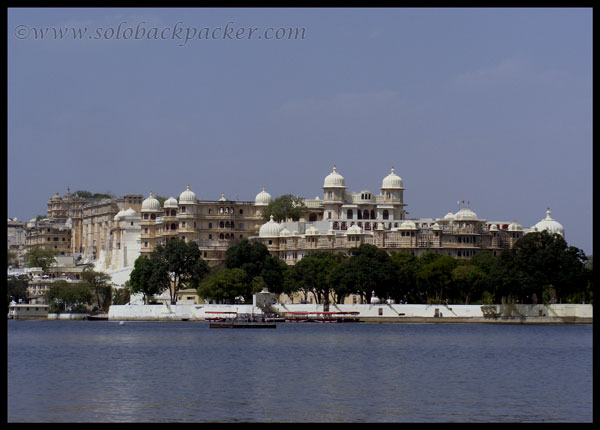
when I reached Udaipur, I was able to get the first glimpse of this palace from the roof of my guest house in the same evening. Again in the same night, I got the night view of this palace. I was sure that it would be an amazing place to visit and when I went there in the next day morning, it was indeed.
The main entrance to the museum is through the main old town street leading to Jagdish Mandir. There is an alternate entrance from the South side also. I went through the main entrance which is known as Badi Pol. At the main gate, Badi Pol, there is a ticket window on the left hand side. Vehicle parking is after the Badi Pol, so you have to stop before that entrance to buy a ticket.
Opening Hours: The museum opens at 9:30 hours and the last ticket is sold at 16:45 hours. The museum closes at 17:30 hours. The museum is open on Sundays and all public holidays except on the day after Holika Dahan in March.
Buying a Ticket: Buying ticket is itself a great task, not because of the crowd, but because of the different options available there. You can buy tickets for different items inside the palace,for example to visit palace complex only or to visit the palace museum or to visit the crystal museum or to take a boat ride in Pichola…or many combinations of these..there is at least 20 combinations. So, first thing is to be sure about your purpose of visit. To keep it simple, I would suggest only two options..
First, you will enter only in the palace complex (to visit in permitted areas only),camera allowed, no museums, INR 25 for adult.
second, you will enter in palace complex and will visit the palace museum also, INR 50 per adult, in this option, all types of camera are subjected to a ticket of INR 200. It means, with a camera you need to spend INR 250 to visit the City Palace Museum.
There are some discounts for the children, handicapped person, armed forces personnel and teachers on the entry ticket, but not on the camera ticket. Audio Tour @ INR 250 including entry ticket is available in English, French, Spanish and German. Parking charges are INR 10 for the bikes and INR 50 for the cars, to be paid at the ticket counter only and subject to the availability of parking spaces.
You can check other packages as well, but later on, there is also a ticket counter inside the palace complex, where you can buy ticket for the items like crystal gallery, boat ride, sound and light show etc.
I bought an INR 260 (museum plus camera plus bike parking) ticket and passed through the Badi Pole. I parked my bike in the parking area and started the tour of this palace.
Right after the parking, there is a beautiful triple arched gate guarded by uniformed guards. This marble gate was built in 1711 and known as Tripolia Gate. It leads to the large courtyard, Manek Chowk or Bada Chowk, in front of the palace. The road between this gate and the palace is lined with shops and kiosks owned by craftsmen, book-binders, miniature painters, textile dealers and antique shops.
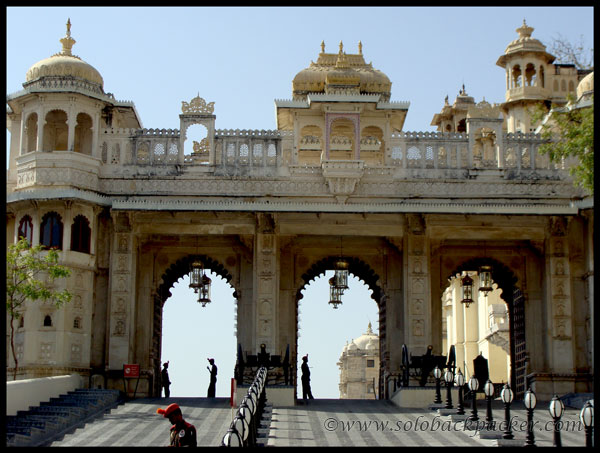
Walking through the courtyard, I reached to the main entrance of the palace interior, Darikhane ki Pol. The door to go inside the palace appears to be very simple, but once inside, there is a sense of grandeur everywhere. Passing through a broad description of the genealogy of the Mewar Rulers, I reached inside a hall, known as Salehkhana. This hall displayed a range of old-styled weapons like guns, swords, spears, armors, pistols, cartridges etc. This hall was initially used as a strong room with small entrance door to with stand army attack. Later the visiting nobles and other guests would deposit their arms here and rest before being ushered into the presence of the Ruler. Maharana Sajjan Singh converted this into the State Armoury. These weapons were used by Mewar rulers and their armies. It give us a good idea of the available options in the war during those days. The flags of Mewar rulers are also displayed in this hall.
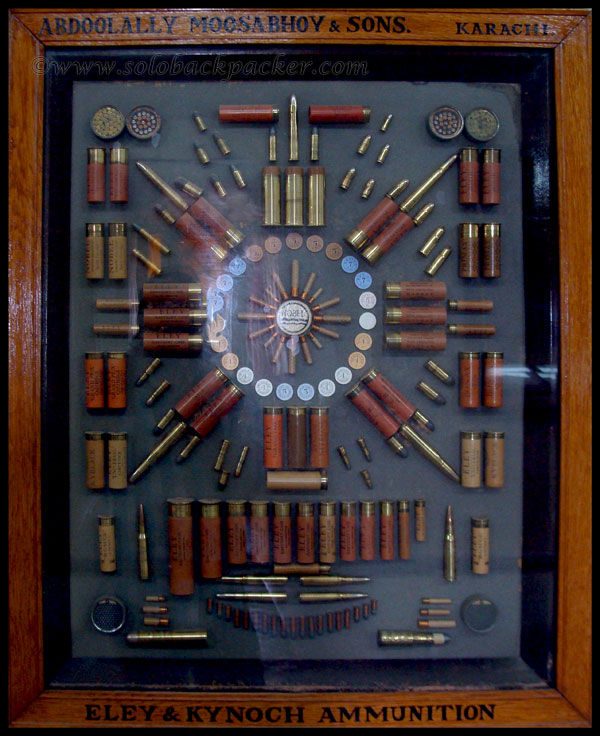
We moved further and reached at the Ganesh Chowk. The wall of the chowk is flanked by whitewashed walls vibrantly painted with martial animals in the traditional Rajput style. There is a sign-board showing City Palace Museum Gate and there, a guard checked our museum tickets. It is supposed to be the main entrance for the museum.
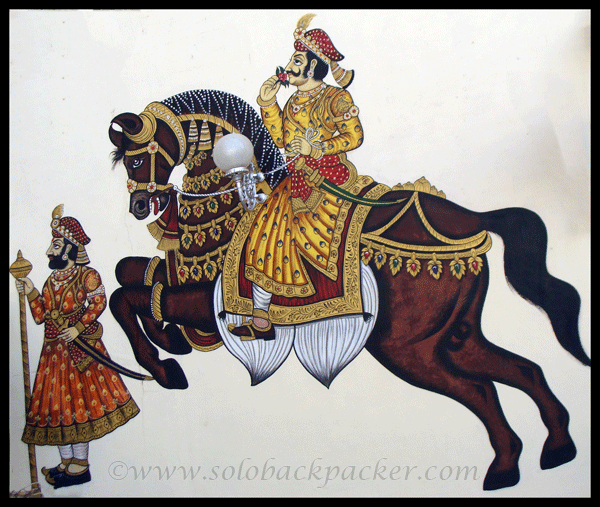
After that, I passed through numerous rooms, verandahs and courtyard to experience the grandeur of this palace. The palace was so vast that I was unable to track the sequence of all the main items like Badi Palace, Badi Chitrashali, Mor Chowk, Rajya Angan, Chhoti Chitrashali etc..But I will try to explain, whatever I found there through the pictures.
Ganesh Deodhi: This ornate image is of Lord Ganesha, the God of wisdom at Ganesh Deodhi, near Ganesh Chowk. This marble idol of Lord Ganesha was made by Rana Karan Singh in 1620. The superb glass inlay work around the image is amazing.
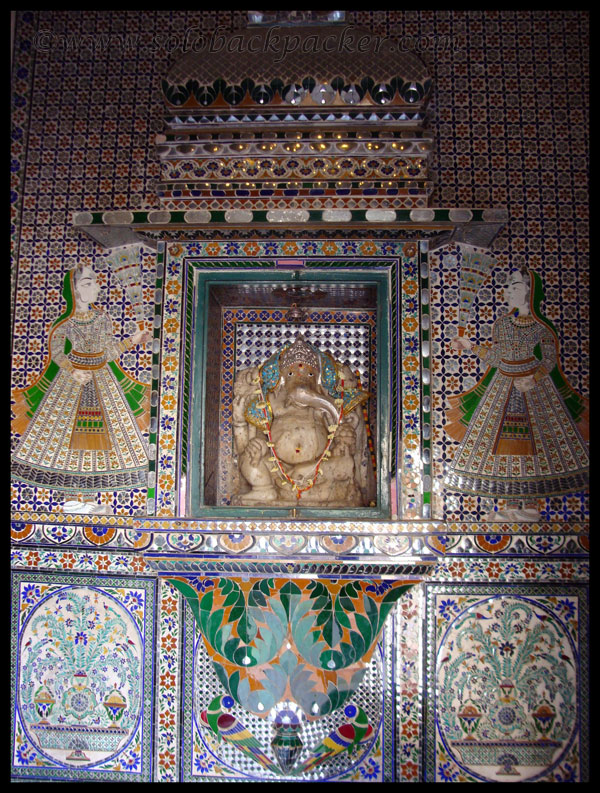
Badi Mahal: It is also known as garden palace. It features a beautiful central garden with flowering shrubs, trees, water basin, fountain and arched pavilions, providing a quiet, shaded spot to rest during a tour of the museum. Situated at the highest point in the palace, it also presents a majestic and panoramic view of the town and Lake Pichola.It may seems on the highest level, but in fact it is at ground level. It was built of local marble with 104 intricately carved pillars and verandahs on both the east and the west side.
Also on display are the cages of pigeons, which were used as a messenger in the ancient time. They worked like a post man in the era, when communication means were not so advanced. You can see one such cage in the picture below. Remember Kabootar Ja Ja from movie Maine Pyar Kiya…
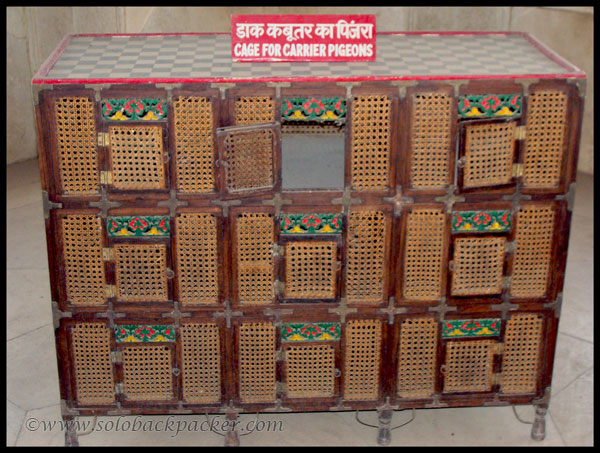
Paintings with Golden Silk: While roaming from the door to door inside the city palace, I came across these paintings. These ethnic miniature paintings are the examples of creative style of the Mewar School of Art. These paintings are made of silk with real gold and using natural colors, means whatever you are seeing in the yellow color here are the silk made of pure gold.
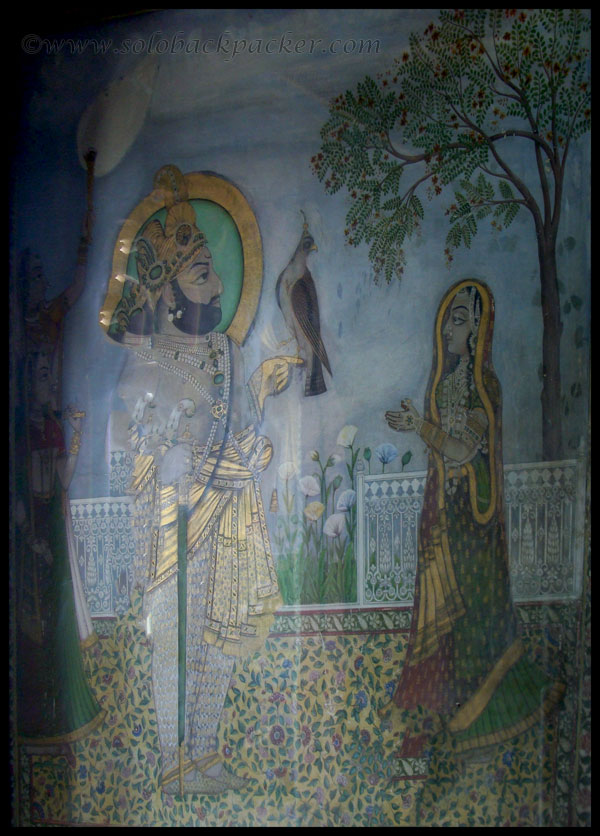
Badi Chitrashali: This lies between the courtyards of Badi Mahal and Mor Chowk. It was built by Rana Sangram Singh. Open from the top and surrounded by walls from four sides, this place was used as a recreation area by Maharanas. The wall is fixed by blue-colored imported tiles from China. Front wall contains two big windows with embedded small glass pieces of many colors like red, blue, green, yellow etc. You can see the colorful expansion of Udaipur city through these colorful glasses. Beyond this wall, there is a large balcony offering an amazing view of Udaipur City. There is always a great rush among the tourists to click the picture from this balcony.
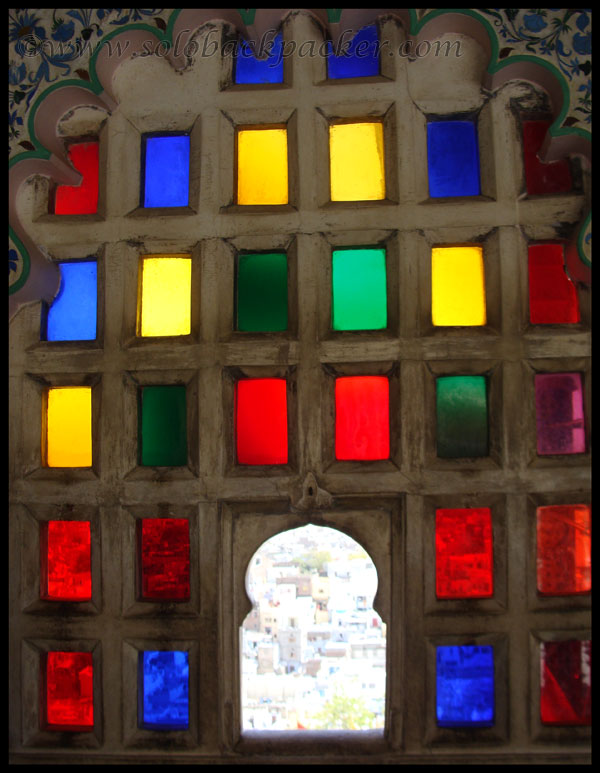
Surya Chaupar: Built by Mahara Karan Singh, this room is dedicated to God Sun. A huge ornamental sun is preserved in this room. Mewar rulers had a great faith in the power of God Sun. It was customary for the Maharanas to offer obeisance to the Sun facing east, every morning before taking breakfast.
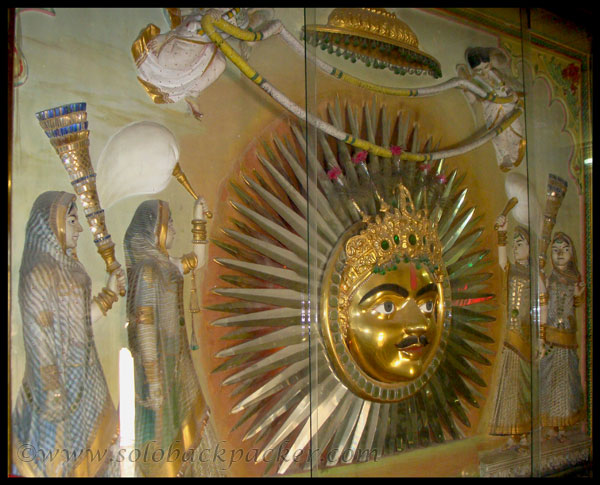
Mor Chowk: For me, nothing could be more attractive than this inside the city palace. Five peacocks, with beautiful glass mosaics and equally beautiful glass inlay work, adorn this place in a remarkable manner. To capture the best of these pieces on a hot sunny day needs a special photography skill, which unfortunately I do not have, but still I share these two pictures to display the most spectacular pieces of the City Palace.
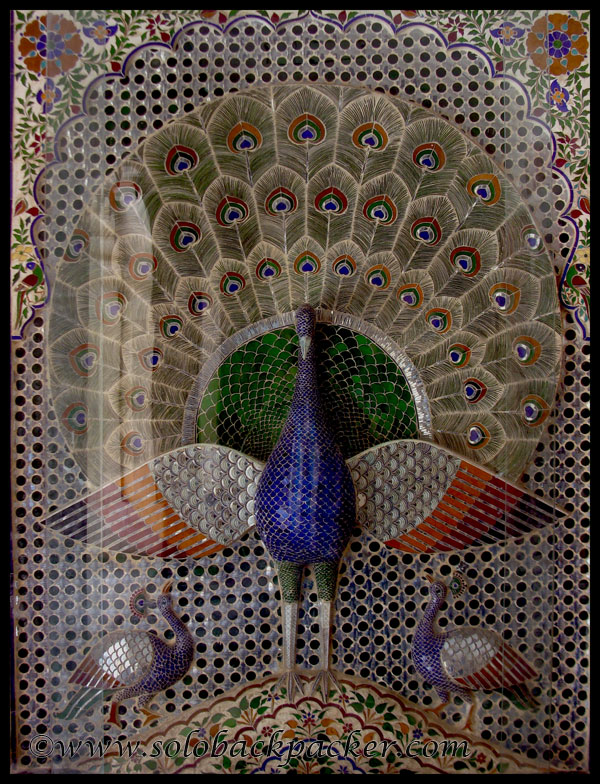
Clay Pots @ Amar Mahal: It was a surprise to see these items of common man inside a palace with exotic decorations. But, there is a display of traditional Indian kitchen with wood for fuel , old-styled fans and other things of general household inside the Amar Mahal. This picture depict an Indian kitchen in the old days. This chulha or stove was made out of clay or stone, in which wood is used as fuel. Utensils are made of metal or clay.
Chandelier @ Private Apartment of Rajmata Gulabkunwar:
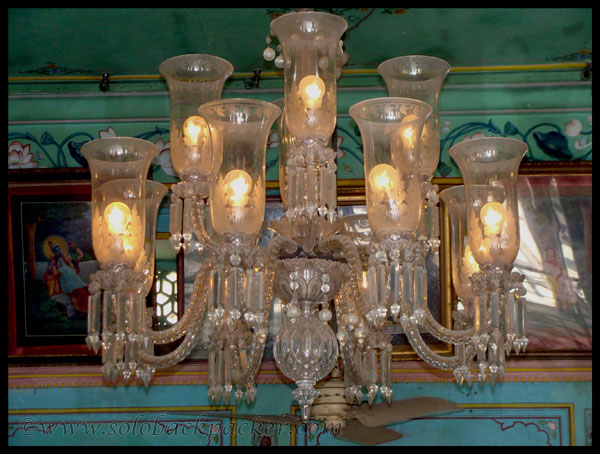
Chitrashali: In chitrashali, there is a large display of exquisite pictures made by traditional Mewar style.
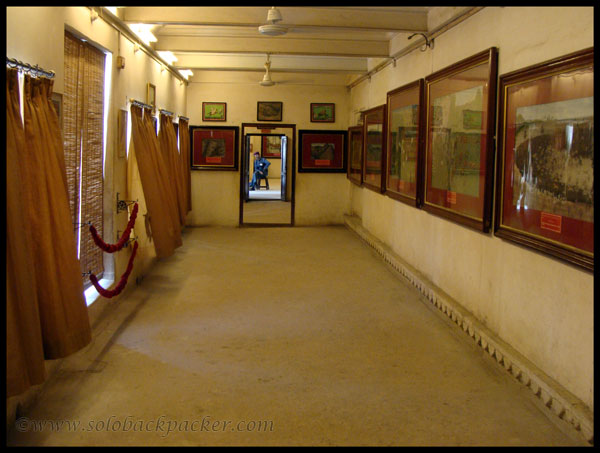
Palanquins Galley: There is a large palanquins galley inside the city palace, where we find a large number of palanquins , elephant haudas and royal bagghhis (horse-driven carts) on display. These carry chairs were used by the Maharana’s for short journeys on special religious and state occasions. Once the Maharana was seated on the chair then four men appointed for this job would then lift the chair and carry him as directed.
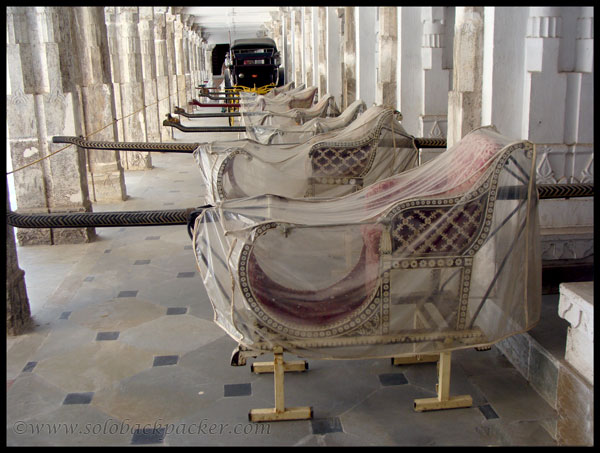
Zenana Mahal: The Zenana Mahal, former palace of the royal ladies, is now splendidly transformed to host regal weddings, events and musical soirees.The Zenana Mahal was built in the early 1600s and has witnessed innumerable royal weddings.
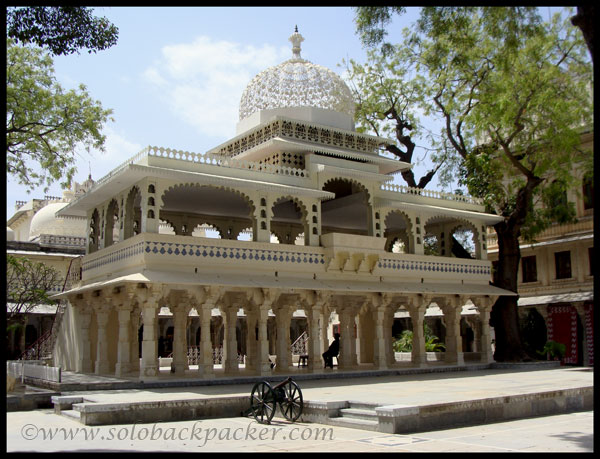
With the visit of Zenana Mahal, this visit to museum was over and we came outside in Manek Chowk from the city palace through the Toran Pol. There’s a large tiger-catching cage near the Toran Pol. Later on, I went on a boat-ride to Jag Mangir Island in Pichola Lake, which will be cover in other blog post.
Apart from this, The City Palace complex also houses two luxury heritage hotels the Fateprakash Palace and the Shiv Niwas Palace, which are not open for general visitors. However, there is a Crystal Gallery in the Fatehprakash Palace, where a visitor can go by purchasing an entry ticket of INR 800. Cameras are not allowed in the crystal gallery. It did not make any sense to me to spend INR 800 for crystal gallery without clicking any pictures, so I did not visit that place.
Overall, a person require at least five hours to visit the City Palace in a proper manner. .City Palace may looks very simple in exterior, but it has amazing interiors with delicate mirror-work, marble work, murals, wall paintings, silver work, inlay work and surplus of colored glass. Gorgeous decorations of City Palace is beyond the words and it always worth a visit.


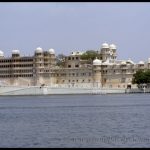
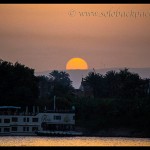
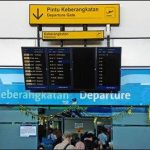
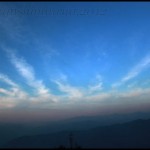
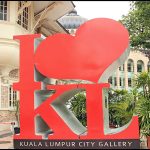
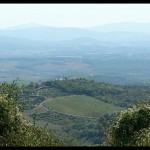
Excellent post. Very helpful
Thank you 🙂
Thank you so much for the detailed info about everything! The photos are lovely!
Thank you for visiting this blog. Happy Travels 🙂
Hey Avinash! Lovely write up! I will visit Udaipur in October and have been reading articles but none of the article have chalked out details like you did. The approx time taken to see City Palace, combos of tickets…all this is something I was looking for and your article came as a blessing in disguise. Thanks a lot for sharing this. And great pictures ya! Keep it up 🙂
Thank you. Have a great trip. 🙂
Thanks for this post; refreshes my visit to the City Palace.
Entrance Tickets are revised from 01.04.2015 kindly correct
Hi, Can you tell me the revised prices also? I would be beneficial to all of us. Thanks.
Nice collection about Udaipur.
Wow!
Udaipur was not part of my Rajasthan itinerary :'(. So I missed all of this.
I’m thankful to you for this post and the lovely sights here.
Nice blog you have over here. 🙂
Thanks for liking the post..
Nice narration and photos of the palace. The place looks brilliant with those vibrant colours and architecture.
Thanks Niranjan…